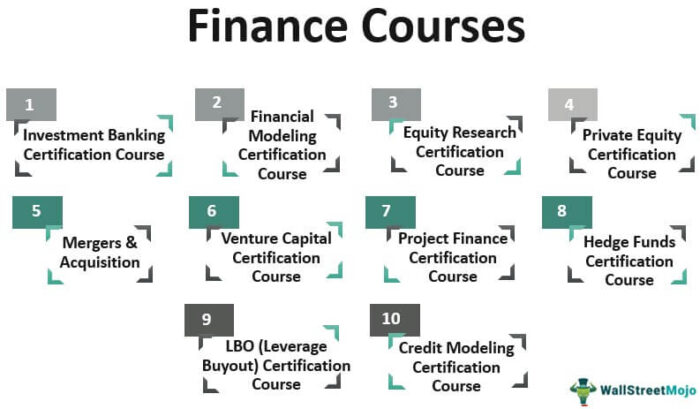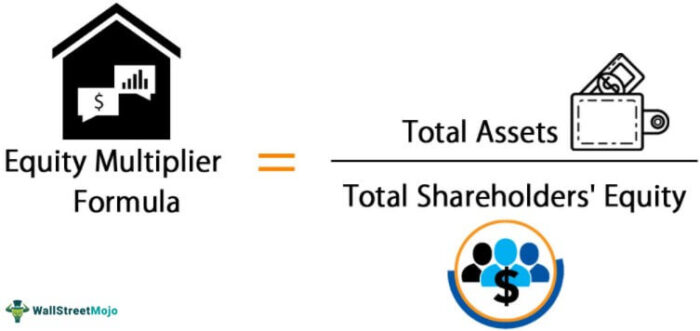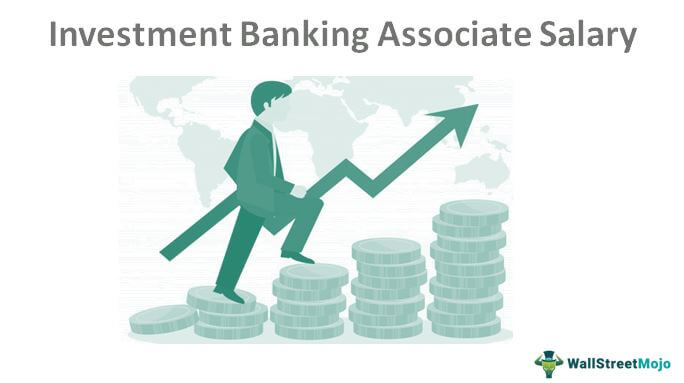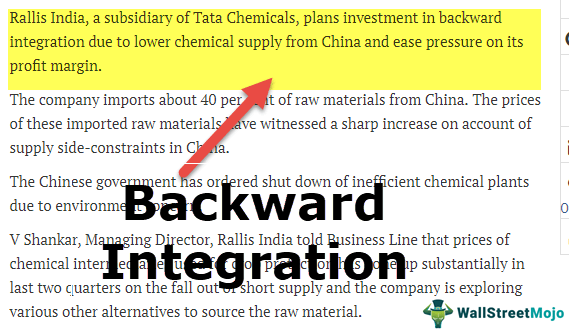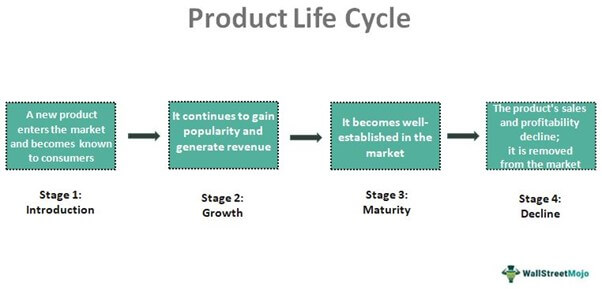
What Is Product Life Cycle?
Product life cycle refers to the duration starting from the time of a product’s introduction in the market until it becomes unavailable to consumers for purchase. Businesses utilize this management tool to make crucial decisions and formulate strategies related to product prices, packaging, and advertising budgets.

This cycle consists of 4 stages — introduction, growth, maturity, and decline. Managing product life cycle efficiently helps businesses to provide customers with what they want and when they want. Moreover, it helps entrepreneurs or business owners determine the right time to introduce a new product to replace the previous one.
Key Takeaways
- Product life cycle is the length of time from when a product first enters the market until it is no longer there on the shelves.
- The four product life cycles stages are introduction, growth, maturity, and decline.
- Managing product life cycle by formulating an effective strategy is crucial for businesses to maintain market share and provide the customer with the right product at the right time.
- A product generates the highest profit in the third (maturity) stage.
Product Life Cycles Explained
Product life cycle definition is the process a product goes through after a business introduces it into the market until it becomes unavailable. Its four stages guide entrepreneurs in formulating strategies to utilize these stages to the fullest, ensuring the product succeeds in the market.
American economist Theodore Levitt developed this concept in 1965. As per him, replacing a product with a better one that fulfills new requirements of consumers is inevitable. Hence, the theory’s basic argument is that a product will eventually leave the market irrespective of how popular it is among consumers.
This cycle involves four stages. The first phase starts when a business introduces its product to consumers. In this stage, a company aims to make consumers aware of the product. During the second stage, the product continues to garner popularity. The marketing costs decrease when the product becomes well-known in the third stage. Finally, as the product moves on to the last phase, its demand declines.
Stages
There are four product life cycles stages. Let us look at them in detail.
#1 – Introduction
Once companies introduce a product into the market, it will not generate revenue until the consumers know about it. Hence, businesses publicize their products through advertising, press releases, social media posts, etc.
Since they have to spread awareness among consumers quickly, the advertising costs are typically high. Moreover, there are additional expenses at the time of a product launch, for example, distribution and packaging. Thus, in the first stage, the cost of introducing the product is usually more than the income earned.
#2 – Growth
In the second stage, the product garners more popularity. As product awareness spreads rapidly among consumers, sales increases exponentially. Thus, a business can maximize production capability, reaping the benefits of economies of scale. Moreover, companies can open multiple distribution channels and add different features to its offering.
During the growth stage, a company may face tough competition if other businesses introduce a similar product in the market. This might lead to price competition. Moreover, companies might incur higher marketing expenses to maintain the product’s demand among consumers.
#3 – Maturity
The sales increase rate is lower than that of the growth stage. As a result, companies may cut their prices and increase their marketing activities to compete with other players in the market.
Entrepreneurs learn from the mistakes they made in the first two stages in this phase and take measures to improve efficiency. The advertisements aim at product differentiation from competitors’ offerings rather than spread awareness. A product’s profitability is the highest in the maturity stage as the cost of manufacturing the product decreases while sales continue to rise.
The main objective of a company in the last product life cycle stage is to keep the market share consistent when cheaper alternatives enter the market.
#4 – Decline
In the final stage, the product’s sales start to decrease along with its profitability. This is mainly because of the introduction of various new products that fulfill the consumers’ requirements better than it.
If a product is on the verge of becoming obsolete, the company can take the following measures:
- They can remove it from the market.
- The management team can lower the marketing expenses or reduce the production cost to maximize the product life for as long as possible.
Examples
Let us look at some product life cycles examples to understand the concept better.
Example #1
There are various examples at every stage of this concept in the home entertainment industry. For instance, videocassettes are no longer there in the market, and smart TVs are in the maturity stage.
Example #2
Suppose company ABC launches a mobile phone and updates it annually to ensure its market share increases or remains consistent. In this way, ABC makes the product feel new to consumers and delays the transition to the decline stage. This shows ABC is efficient in managing the life cycle.
Example #3
In July 2022, Unilever introduced a new laundry capsule. The company claims it to be the most sustainable one yet. This product’s specialized formula comprises biodegradable active ingredients and can deliver top-notch performance in cold and short cycles, reducing its carbon footprint by 16%.
The reduced emission across the product’s life cycle will spearhead the efforts put in to decarbonize the global laundry industry.
Frequently Asked Questions (FAQs)
The information required to make decisions regarding any product depends on the life cycle stage. Hence, an account of a business must be aware of the ongoing stage to prepare information and interpret the same.
Yes, the concept applies to the healthcare industry as well.
In the last few years, the amount of time a product takes to reach the decline stage has increased significantly. The duration varies for different products and depends on the industry as well. That said, on average, products are reaching the decline stage faster. The smartphone space is an ideal example in this regard. Companies are launching new models yearly in all budget segments to compete in the market.
This refers to the accumulation of costs related to a product over its life cycle, i.e., introduction to abandonment.
Recommended Articles
This has been a guide to What is Product Life Cycles. Here, we explain different product life cycle stages along with examples. You may learn more from the following articles –
- Business Strategy
- Competitive Market
- Product Portfolio

